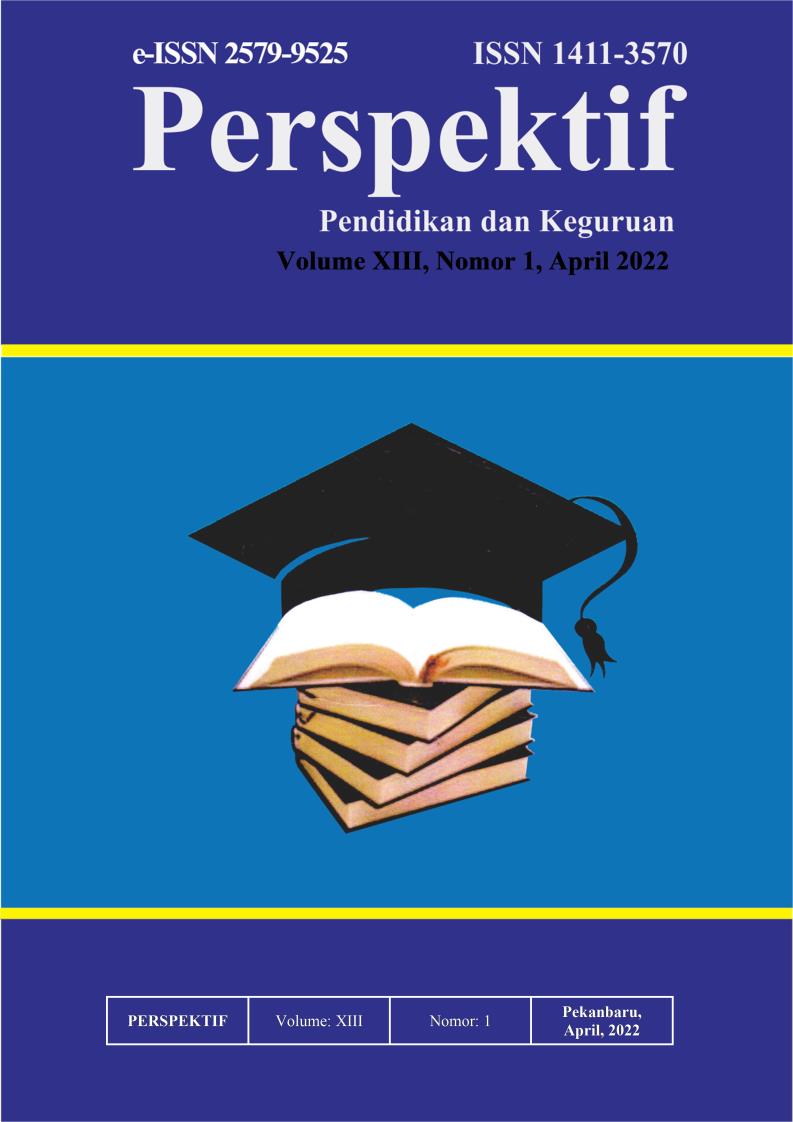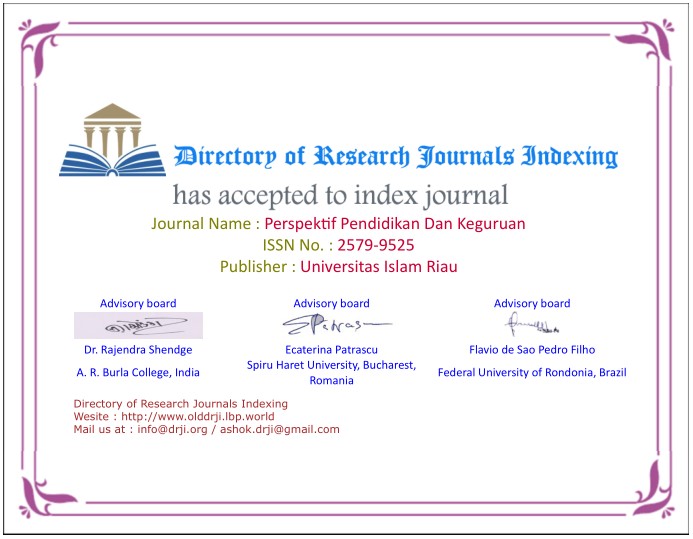Arabic Language Learning With Blended learning Model In Arabic Language Education Study Program
DOI:
https://doi.org/10.25299/perspektif.2022.vol13(1).9474Keywords:
Arabic Learning, Blended learning Model, Learning ActivitiesAbstract
The purpose of this study was to describe the implementation of learning Arabic using a blended learning model and to reveal the obstacles faced by students. This research is a field research with a qualitative descriptive method. The data collection method uses observation and interview techniques. The place of research is at the Arabic Language Education Study Program, IAIN Pontianak. The results of this study are the implementation of Arabic language learning with the Blended learning model carried out in two systems, namely the face-to-face system and the online system. Face-to-face learning is done virtually using the Google Meet application. While online learning is done using e-learning applications and You Tube. The obstacle faced by students when participating in learning is the difficulty in understanding the material, especially when learning is done online. Besides that, the limited internet network also makes students unable to take part in learning well. Learning Arabic with a blended learning model should adapt to the need for communication and interaction between educators and students in the learning process. Learning skills that are expressive should be done with a face-to-face system. Meanwhile, receptive skill learning can be done online.
Downloads
References
Arifudin. (2020). Pembelajaran Bahasa Arab Ditinjau dari Asal Sekolah Mahasiswa (Studi Kasus Terhadap Mahasiswa Prodi PAI). An-Nizom, 5(3), 139–148. https://doi.org/http://dx.doi.org/10.29300/nz.v5i3.3891
Assidiqi, M. H., & Sumarni, W. (2020). Pemanfaatan Platform Digital dalam Pembelajaran Daring di masa Pandemi Covid-19. Prosiding Seminar Nasional Pascasarjana UNNES
Dariyadi, M. W. (2020). Model Pembelajaran Berbasis Blended Learning dalam Pembelajaran Bahasa Arab. Konferensi Nasional Bahasa Arab (KONASBARA), 980–987. http://prosiding.arab-um.com/index.php/konasbara/article/view/743/705
Hadiansyah, M. H. (2017). Efektivitas Model Pembelajaran Blended Learning untuk Meningkatkan Prestasi Belajar Siswa pada Kemahiran Menyimak di MAN 1 Tulungagung. Konferensi Nasional Bahasa Arab (KONASBARA), 207–215. http://prosiding.arab-um.com/index.php/konasbara/article/view/130
Handayani, O. I. & Wulandari, S. S. (2020). Pembelajaran Daring Sebagai Upaya Study From Home (SFH) Selama Pandemi Covid-19. Jurnal Pendidikan Administrasi Perkantoran (JPAP), 8(3), 496-503
Hanifah, U., & Hajib, Z. A. (2020). Ahdāfu Ta’līmi al-lughah al ‘arabiyāh fī manhaji alfaīn wa tsalātsata ‘asyara (dirāsah tahlīlīyah ‘ala ma’āyīr ‘ālamīyah: aurūbīyah wa amrīkīyah). Al Mahara : Jurnal Pendidikan Bahasa Arab, 6(2), 155–147. https://doi.org/https://doi.org/10.14421/almahara.2020.062.01
Kemendikbud. (n.d.). Kamus Besar Bahasa Indonesia (KBBI). Retrieved October 5, 2020, from https://kbbi.web.id/sekolah
Khaerunnisa, F. (2019). Evaluasi Penerapan Blended Learning pada Pembelajaran Bahasa Arab di SMPIT Ibadurrahman: Studi Kasus di Kelas VII Akhwat. ALSUNIAT: Jurnal Penelitian Bahasa, Sastra, Dan Budaya Arab, 2(2), 95–108. https://doi.org/https://doi.org/10.17509/alsuniyat.v2i2.24808
Lestari, S. (2018). Peran Teknologi dalam Pendidikan di Era Globalisasi. Edureligia: Jurnal Pendidikan Agama Islam, 2(2), 94–100. https://doi.org/https://doi.org/10.33650/edureligia.v2i2.459
Mufidah, N., Isyaty, I., Kholis, N., & Tahir, S. Z. Bin. (2018). ICT For Arabic Learning: A Blended Learning in Istima’ II. LISANUNA, 8(2), 174–183. https://doi.org/http://dx.doi.org/10.22373/ls.v8i2.4561
Sa’diyah, H. (2019). Pembelajaran Maharah Al-Kitabah Berbasis Blended Learning Di Tingkat Perguruan Tinggi. Lugawiyyat, 1(1), 39–47. https://doi.org/https://doi.org/10.18860/lg.v1i1.7880
Sadikin, A., & Hamidah, A. (2020). Pembelajaran Daring di Tengah Wabah Covid-19. BIODIK: Jurnal Ilmiah Pendidikan Biologi, 6(02), 214–224. https://doi.org/https://doi.org/10.22437/bio.v6i2.9759
Sulistio, A. (2021). Peningkatan Prestasi Belajar Bahasa Inggris Melalui Pembelajaran Jarak Jauh (PJJ) dalam Penerapan Pembelajaran Sinkrong dan Asinkron melalui Google Classroom, Google Meet dan Aplikasi E-Learning. SECONDARY: Jurnal Inovasi Pendidikan Kejuruan, 1(2), 63-69
Sulistiono, M. (2019). Implementasi Hybrid Learning Menggunakan Aplikasi Edmodo pada Mata Kuliah Metode Penelitian Kualitatif. ElementerIs: Jurnal Ilmiah Pendidikan Dasar Islam, 1(1), 57–67. https://doi.org/http://dx.doi.org/10.33474/elementeris.v1i1.2794
Supriyatno, D. (2018). Pengaruh Penggunaan Media Pembelajaran Berbasis E-Learning. Modeling: Jurnal Program Studi PGMI, 5(1), 112-129
Tayeb, T. (2017). Analisis dan Manfaat Model Pembelajaran. AULADUNA: Jurnal Pendidikan Dasar Islam, 4(2), 48-55. https://doi.org/10.24252/auladuna.v4i2a5.2017
Uti, H. Y., Munir, & Said, S. D. (2021) JURNAL PEMIKIRAN DAN PENGEMBANGAN PEMBELAJARAN, 3(3), 10-17
Widodo, S. A. (2020). Pengembangan Dan Pemertahanan Bahasa Arab Melalui Pendidikan Di Lembaga Pendidikan Islam Di Indonesia. Al Mahara : Jurnal Pendidikan Bahasa Arab, 6(2), 195–216. https://doi.org/https://doi.org/10.14421/almahara.2020.062.03
Downloads
Published
How to Cite
Issue
Section
Accepted 2022-06-08
Published 2022-06-09

















